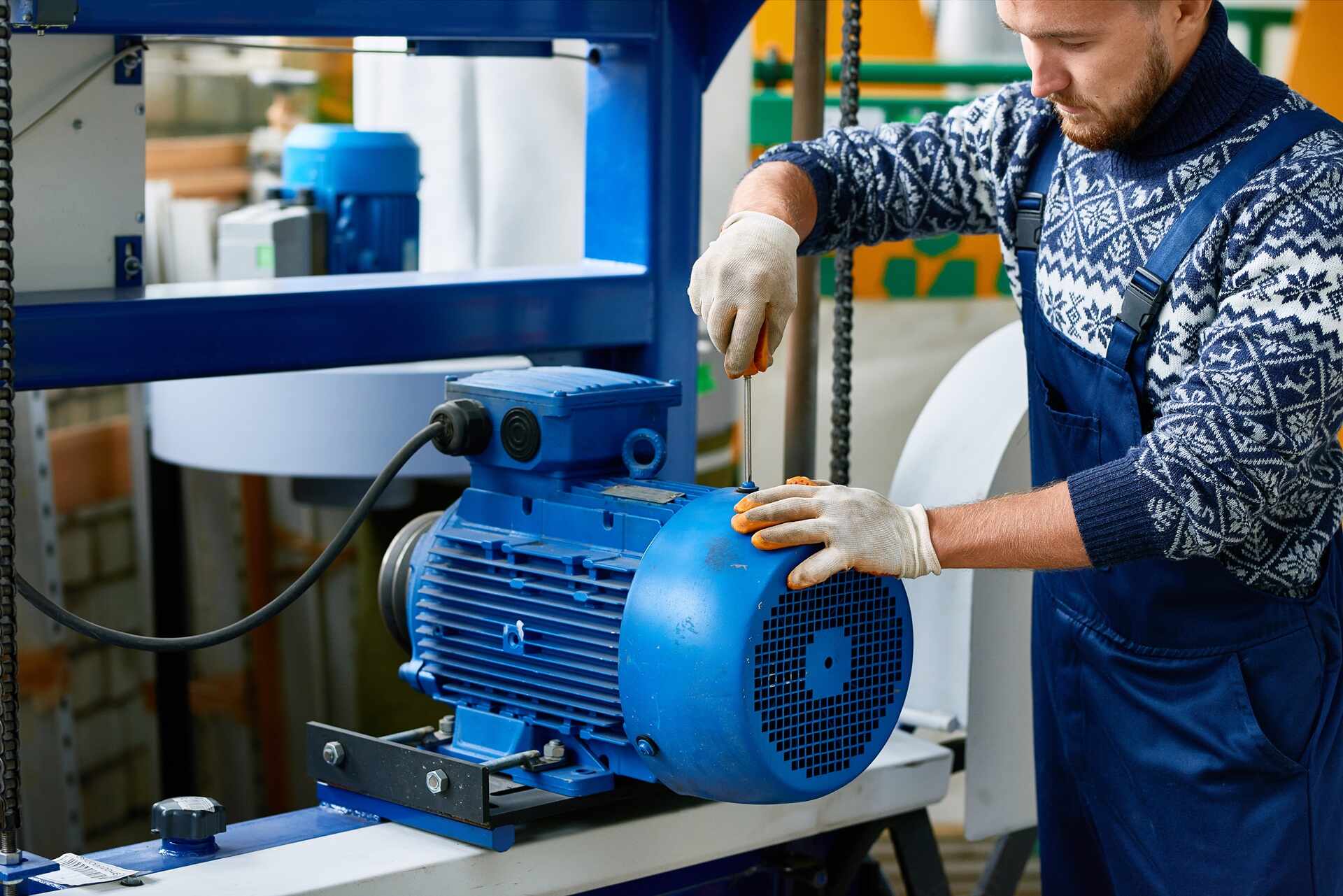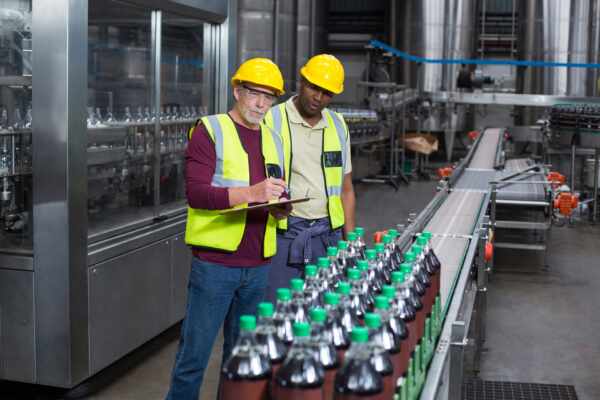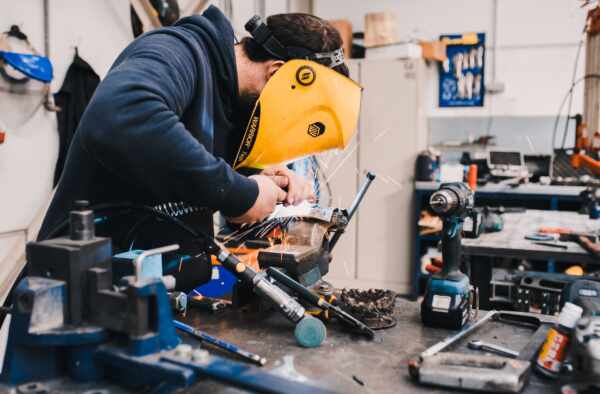The food manufacturing industry faces increasing pressure to adopt more sustainable and eco-friendly practices. One area to strategise energy efficiency is in conveyor belt systems, the backbone of food production lines.
As these systems run continuously throughout the production process, optimising energy consumption has significant potential for cost savings and reducing the operation’s environmental impact. Implementing innovative solutions and best practices can help food manufacturers minimise the energy consumption of their conveyor belt systems, fostering both cost-effective and environmentally conscious food manufacturing operations.
In this article, we will explore energy-saving strategies for conveyor belt systems in food manufacturing operations, providing insights into efficient motor selection, belt materials, and design considerations. Additionally, we will discuss the advantages of predictive and preventative maintenance for energy conservation and examine the benefits of integrating automation and smart technologies in conveyor belt systems for optimised energy usage.
Efficient Motor Selection for Conveyor Belt Systems
The motor is a critical component in a conveyor belt system, driving the belt and controlling its speed. To optimise energy usage, consider the following factors when selecting a motor:
1. Motor Efficiency: Choose high-efficiency motors that consume less energy and produce fewer emissions. These motors often have a higher upfront cost but result in significant energy savings in the long run.
2. Variable Frequency Drives (VFDs): Using VFDs to control conveyor belt speed allows for precise adjustments based on production demands, reducing energy consumption during periods of lower demand.
3. Motor Size: Sizing motors properly ensures they work within their optimal efficiency range, preventing energy waste and excess heat generation. Work with an expert to determine the most suitable motor size for your conveyor belt system.
Belt Materials and Energy Consumption
The conveyor belt material can have a significant impact on energy usage, as different materials have varying friction coefficients and power requirements. Consider the following when selecting belt materials:
1. Light-weight Materials: Opting for lightweight material, such as PVC, can reduce the energy needed to move the belt, ultimately lowering energy consumption.
2. Reduced Friction: Choose materials with low friction coefficients to minimise the energy required to drive the conveyor belt, improving overall efficiency.
3. Durable Materials: Selecting a durable conveyor belt material minimises wear, reducing the need for frequent maintenance and replacement, and enhancing long-term energy efficiency.
Conveyor Belt Design Considerations
The design of the conveyor belt system plays a vital role in energy consumption. Consider these factors to design an energy-efficient system:
1. Belt Width: Wider conveyor belts typically require more energy to move products. Optimise your conveyor belt width based on production needs and material sizes to balance efficiency and energy usage.
2. Conveyor System Length: Minimise the overall length of your conveyor system to reduce energy consumption. Eliminate unnecessary bends, loops, or extensions to maintain a more compact and efficient layout.
3. Level Inclines: Inclined conveyor belt systems require more energy to move products uphill. Implement level or shallow inclines where possible to reduce the energy needed to transport products.
Predictive and Preventative Maintenance for Energy Conservation
Regular maintenance of conveyor belt systems prevents energy waste caused by faulty equipment or inefficient component performance. Consider implementing these maintenance strategies for optimal energy conservation:
1. Regular Inspections: Conduct routine inspections of conveyor belts, motors, bearings, and other components to identify any issues that may impact energy efficiency.
2. Predictive Maintenance: Implement a predictive maintenance approach based on data analysis, leveraging sensors, and monitoring devices to identify equipment performance trends and preemptively address potential energy losses.
3. Preventative Maintenance: Perform regular component replacements and system upgrades to maintain optimal efficiency. Proactively replacing worn or inefficient components before they fail can prevent energy waste and maintain a consistently efficient conveyor belt system.
Automation and Smart Technologies for Energy Savings
Incorporating automation and smart technology can significantly enhance energy efficiency in conveyor belt systems:
1. Automated Controls: Utilise automated control systems to optimise conveyor belt speeds based on production needs, minimising energy usage when demand is reduced.
2. Industrial IoT: Integrate Industrial Internet of Things (IoT) devices to collect and analyse conveyor belt system data. Real-time monitoring can optimise energy consumption by highlighting performance trends and anomalies that may impact efficiency.
3. Energy Management Systems: Implement energy management systems to monitor and control energy consumption, alerting operators of inefficient operating conditions and providing data-driven recommendations for energy optimisation.
Final Thoughts
Minimising energy consumption in conveyor belt systems is essential for food manufacturing operations seeking greener, cost-effective solutions. By focusing on efficient motor selection, innovative belt materials, and thoughtful design considerations, food manufacturers can significantly reduce the energy demands of their conveyor belt systems.
Additionally, embracing predictive and preventative maintenance strategies, along with incorporating automation and smart technology, can further promote energy efficiency and cater to the growing emphasis on sustainability in the food manufacturing industry.
Enhance your food manufacturing operation’s energy efficiency with Change Parts’ comprehensive range of conveyor belt solutions. Whether you require expert advice on motor and belt selection or guidance for incorporating innovative smart technology, our team is ready to support your journey towards a greener, more sustainable operation.




